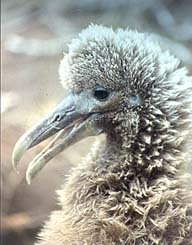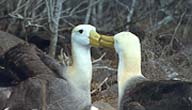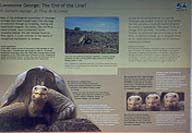“Nothing could be less inviting than the first appearance. A broken field of black basaltic lava is everywhere covered by a stunted brushwood, which shows little sign of life.” Arriving at Baltra, the sole airport of the Galapagos, on a misty overcast afternoon I could not help thinking that Charles Darwin’s initial assessment of the islands, which he made famous in 1835 whilst serving as a naturalist on the British Ship HMS Beagle, was spot on. Yet on closer inspection neither of us could have been more wrong: the seemingly Spartan landscape was teeming with wildlife. Quite simply the Galapagos are extraordinary and more than worthy of their epithet “Enchanted Isles”.
The collections made by Darwin during his short stay in the Galapagos Islands and the notes and impressions he carried away inspired him for the rest of his life. They contained the seeds, which later resulted in his On the Origin of the Species by Natural Selection and produced a revolution in human scientific thought that went on to change the thinking of mankind. I cannot presume to have such vision or greatness but merely hope that this article does justice to the uniqueness of the Galapagos Islands and perhaps inspires you into a voyage of discovery.
A three-hour flight carried us some 600 miles west of the coast of Ecuador into the Pacific Ocean to the Galapagos archipelago, now declared a National Park and a UNESCO World Heritage Site in an effort to preserve the islands just as they were centuries ago. Here we were met by Bitiane, or BT as she helpfully suggested, the naturalist on board our boat the Alta who was to bring the Galapagos alive with such passion.
Ensconced on the Alta later that evening, BT gave us the first of what were to become nightly talks about the Galapagos and their unique natural history and ecology. The purpose of the talks was twofold. Firstly to give us background information about the area and animals we would see, getting us excited about the next day, as if we weren’t already. Secondly to deal with the practicalities of what to wear, which varied depending on whether we would have a wet or dry landing, whether we would be swimming, snorkelling or hiking. She carefully explained how the thirteen islands and dozens of smaller islets and rocks of the Galapagos were the result of volcanic activity, the oldest being San Cristóbal and Espanol in the east of the archipelago which were three million years old, and the youngest being Fernandina and Isabela in the west that were 700,000 years old. Thus in geological terms the islands are very young but more importantly they have never been connected to the South American continent and hence there are so many endemic species: a quarter of the species of shore fish, half of the plants and almost all of the reptiles are found nowhere else.
Having condensed millions of years of evolution into a matter of minutes, BT went on to explain the next day’s events, which ironically took much longer to do as she was bombarded with excited questions. Duly sated, both with knowledge and food, I retired to my cabin where I was rocked to sleep by the gentle rolling motion of the ocean (due to the distances between the various islands and in order to maximise our time on the different islands it was necessary to sail each night).
I awoke with eagerness and anticipation and my first steps onto the Island of Genovesa did not disappoint. I had heard and read many times that due to the absence of predators, the animals and birds lacked any fear of humans and yet little did I fully appreciate the enormity of this until I was confronted by a masked boobie blocking my way on the path. In defiance of the instinct of survival and unperturbed by my greater size, the boobie obstinately stood his ground. I marvelled at his bravery and stepped off the trail to find that he was not alone and that I was surrounded by hundreds of fearless boobies.
I was both thrilled and surprised. Thrilled at seeing so many birds at such close quarters and, being no ornithologist, surprised that I could be so enthusiastic about birds. The Galapagos were winning me over already. I tried to explain my excitement to BT but she smiled patiently and assured me that this was only the beginning. She was not wrong as only later that day I nearly head-butted a red-footed boobie in a tree - the red-footed boobie is the only web-footed bird capable of perching. Calmly observing me from its perch, the exquisite face and brilliant colours at the rim of the boobie’s eyes reminded me of the make-up of the Chinese Opera.
However the opera of the red-footed boobie paled in comparison to the drama, albeit light-hearted and comical, of the courtship ritual of the blue-footed boobie. Having located each other via the male’s whistle and the female’s honk they would begin to rock their egg-shell blue feet awkwardly in the dance of courtship, building up to a crescendo when they would start strutting, or sky pointing as it is scientifically referred to, putting their head and tail skywards and raising their wings in display. The amusing performance would end with much appreciative clucking and the symbolic presentation of twigs – a boobie love token. The more cultured amongst you would undoubtedly be more eager to see the elegant and beautiful courting ritual of the waved albatross. Every naturalist’s dream, it was undeniably transfixing to watch as they clashed their beaks together in graceful rhythm, but it did not touch me in the same way as the clumsiness and unassuming charm of the boobies. I am unashamedly a boobie man.
The next day we disembarked from the panga – a small zodiac that ferried us from the Alta to the islands and back – to be confronted by a group of local heavies loitering menacingly in the early morning sun. Slouched arrogantly across the rocks, their spiky black scales not only made them difficult to distinguish from the volcanic rock but gave them a hard, punk-like quality. Supercilious and disdainful they stared with contempt at the approach of our camera-touting group.
Although fierce looking, their bite was worse than their bark: BT explained that the ‘heavies’ were marine iguanas who were in fact gentle vegetarians. The nearest they got to threatening behaviour was to squirt salt from each nostril, a harmless means of rebuffing the over-zealous amongst our group who dared to get too close.
If the haughty stare of the iguanas was unwelcoming, the soft, dewy-eyed look of the newly born pup seals was the complete opposite and had us reaching for our cameras to capture the heart-rending image on film. Left in the tide pool for the morning – a kind of seal pup crèche - whilst their mothers had gone to sea to fish, the pups looked forlorn and lost, repeatedly crying out for Mum. Yet BT forced us to ignore the plaintive bleating of the pups ensuring us that there was much more to see and that we did not want to become emotionally attached to the pups.
As we moved slowly along the shoreline, we passed within feet of a number of sea lion cows and their young. Basking sleepily in the sun, they barely lifted an eye at our passing, which was most definitely not the case when one of our group inadvertently got too close to the territory of a young bull. Barking angrily, the bull came charging out of the water at terrifying speed and up the beach to chase the unfortunate transgressor off his territory. Threat dealt with, the sea lion bull bared his impressive teeth and roared his disapproval with the arrogance of his terrestrial namesake.
A few days later we awoke to find ourselves surrounded by brilliant turquoise water kissing the sandy beaches of San Cristobal’s shoreline. Today we were going snorkelling and hopefully swimming with sea lions; I was as excited as child until my adult sensibilities kicked in and I remembered how fiercely territorial the bull sea lion had been and also how cold the sea temperature was. Surprisingly, even though the islands are situated on the equator and in spite of the strength of the sun, the water of the Islands is cold due to the Humboldt current which travels north up from the icy waters of Antarctica. This results in a number of phenomenon, such as the morning mists that cloak the islands at certain times of the year, but more importantly in the nutrient rich waters that support much of the marine life of the Galapagos.
I need not have worried on either account. My ‘shortie’ wet suit kept me more than warm and the snorkelling was breathtakingly fantastic, especially swimming with the turtles and sea lions. The turtles were graceful, quiet and calm as they glided along, their stately progress in complete contrast to the fast and furious playful antics of the sea lions. My first contact with the sea lions was when one juvenile came racing towards me, bared its teeth and then veered away at the very last minute. My initial reaction was fear but this quickly turned to exhilaration as I realised that he was only playing and before I knew it I was trying to imitate these underwater acrobats. But try was all I could do for the sea lions were in a mesmerising class of their own wheeling, twisting, turning and somersaulting effortlessly around me.
Back on terra firma we visited Santa Cruz, the main inhabited island, home to a human population of 10,000 and also one of the islands’ most celebrated residents, the giant tortoise. There were once over 200,000 tortoises on the islands but this has now been reduced to about 15,000. Between the 1500s and 1800s, a great number of tortoises were taken by sailors for food as they were a good food source living up to a year in the holds of the ships without food and water - it is said that formerly single vessels have taken away as many as seven hundred of these creatures. Darwin himself remarked, “The breastplate roasted, with the flesh attached to it, is very good; and the young tortoises make excellent soup.”
The tortoise population suffered badly at the
hands of humans and it would perhaps not have survived but for recent
intervention. Thankfully
the work of the Charles Darwin Research Station, amongst others, has
helped stop the decline in tortoise numbers and given them a more positive
future. Unfortunately not all tortoises have been so lucky as I discovered
when we met ‘Lonesome George’. One of the 11 remaining races
of the Galapagos Giant Tortoise (Geochelone elephantopus abingdoni) comes
from the Island of Pinta, but their numbers were decimated by whalers
and sailors to such an extent that the last recorded sighting of a tortoise
on Pinta was 1906. That was until Galapagos Park wardens came across ‘George’ in
1971. Being the last of his species, ‘Lonesome George’ was
placed in a corral with female tortoises (Geochelone elephantopus becki)
from Wolf Volcano in the hope that he would pass some of his genes into
future generations (the Wolf race were the closest morphologically to
the Pinta race). Sadly ‘George’ has not succeeded in breeding
successfully with these females and thus when ‘George’ dies
his races ends with them.
Sadly the old problem of human depredation and the ensuing threat to
the islands’ biodiversity and eco-systems is rearing its ugly head
again, but this time in the guise of the growth of the tourism industry,
which grew from 10,000 visitors in 1980 to over 60,000 in 2000. The tourism
debate is an emotive one with foreign scientists and conservationists
on one side and populist politics on the other. The answer is not for
us, the tourists, to necessarily stay away but to travel with a small
operator that advocates sustainable practice and seeks to minimise its
impact on the islands. There is an important role for the tourist to
play not least in visiting the islands and becoming an ambassador for
their protection and conservation. And there is such wealth and diversity
to protect:
“There! There!” I cried excitedly as I saw the spray of a blowhole spouting in the distance. But by the time the others in the panga were looking in the direction in which I was pointing, there was of course no longer any sign of the spray – it was pointless, rather like trying to show someone where you had just seen a shooting star. The others looked at me with scepticism, wary of the fact that I had caused a twenty-minute diversion from our early morning sailing schedule in search of whales that I had allegedly seen. Undeterred by their lack of faith in my “sighting” I continued to scan the horizon, reassured by the fact that BT was also keeping a lookout; she knew that this was a good area in which to see whales and moreover that the conditions for doing so were perfect.
“Yes, yes. You’re quite right. I think there are two of them on the horizon about two o’clock,” confirmed BT. With corroboration from the expert I felt vindicated, but more importantly we headed off towards the spray.
We soon realised that there was not one but three whales, the largest of which was some seventeen metres in length, feeding in the area. They were Sei whales, a type of baleen whale, and it was a truly remarkable experience seeing these leviathans rise gradually out of the water for breath before slipping back below the surface to resume their feeding. Even though they were some ten to twenty metres away their impressive size dwarfed our three-metre zodiac.
The whales were feeding on krill, a small shrimp-like crustacean, which in turn brought fish to the surface and thus birds. The sky was littered with boobies diving ungainly all around us. The water churned with little thuds and splashes as the boobies hit the water, diving as deep as twenty feet to ensnare a fish.
Having watched the whales for several minutes, BT felt sure that were feeding in a circular pattern and manoeuvred the panga into the centre of this imaginary circle and cut the engine. The effect of silencing the motor was electric, heightening our senses and anticipation of what was going on around us. The sea was calm, eerily so, which was more than could be said for my racing heartbeat.
The whales seemed – and it can only be the most vague of estimates as I was so absorbed by the whole experience that I really had no sense of time – to be underwater for an age, certainly much longer than usual. Had they had their fill and moved off? Where were they? Then suddenly the water all around us seemed to come to the boil as thousands of bubbles rose to the surface. I stared in disbelief struggling to come to terms with what was happening, that directly below us a whale was coming to the surface. It was thrilling, magical yet at the same time frightening as hell.
I do not know if the whale was aware of our small presence or if it was too absorbed in it’s feeding to notice us. Whether by design or luck, the whale did not, thankfully, come up directly below us but swam just underneath rising on the far side of the panga, back arching slowly, gracefully and above all massively.
Dumbfounded we all stared in amazement, humbled by the sheer size of the mighty cetacean. “Did anyone get a photo,” someone whispered hoarsely. BT’s nervous laughter said it all – we had all been too gripped by the excitement of the moment to even contemplate trying to capture it on film.
This for me is the very essence of the Galapagos,
namely that while you may come away with some fantastic photographs
it is impossible to
capture the inimitable charm of the islands on film. There is simply
put nothing else like them in the world and it seems fitting to end where
I began with a quote from Darwin: “The natural history of this
archipelago is very remarkable: it seems to be a little world within
itself; the greater number of its inhabitants, both vegetable and animal,
being found nowhere else.”
|
|
|

























